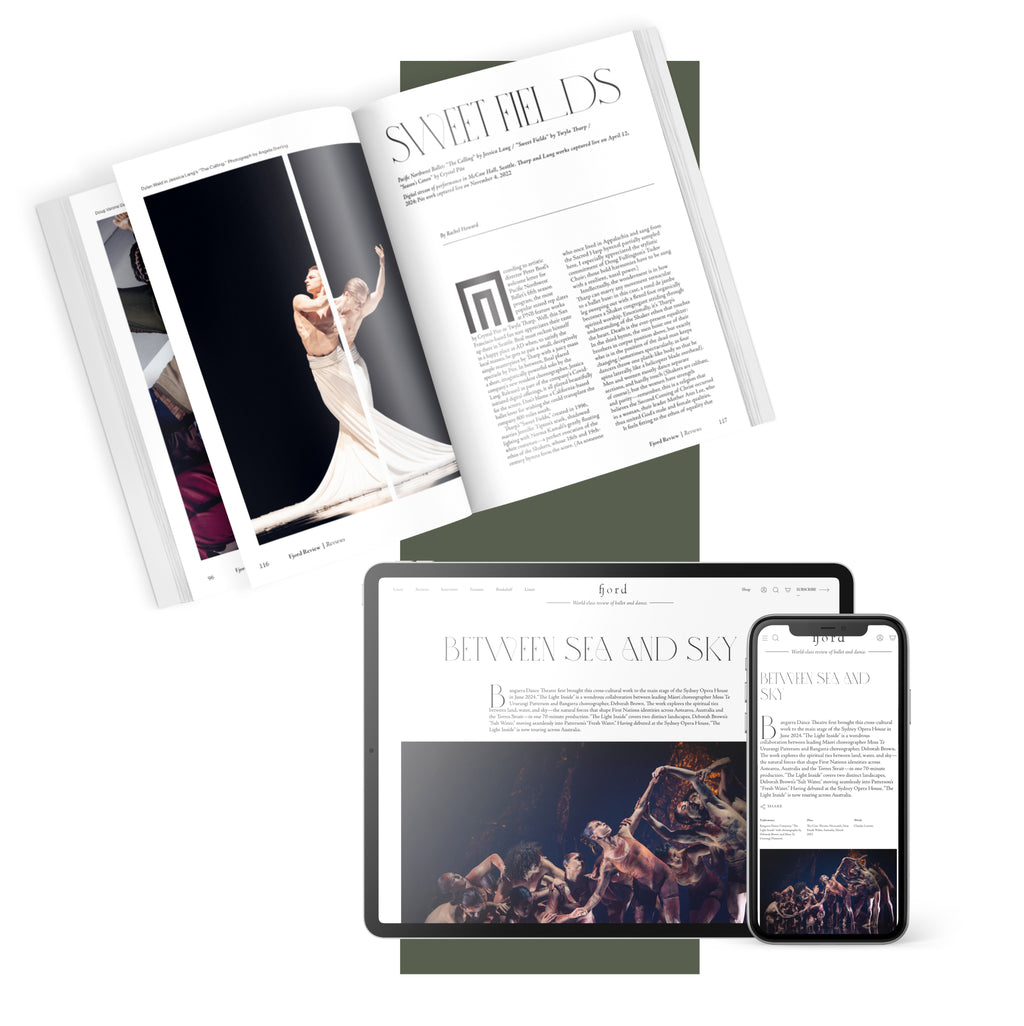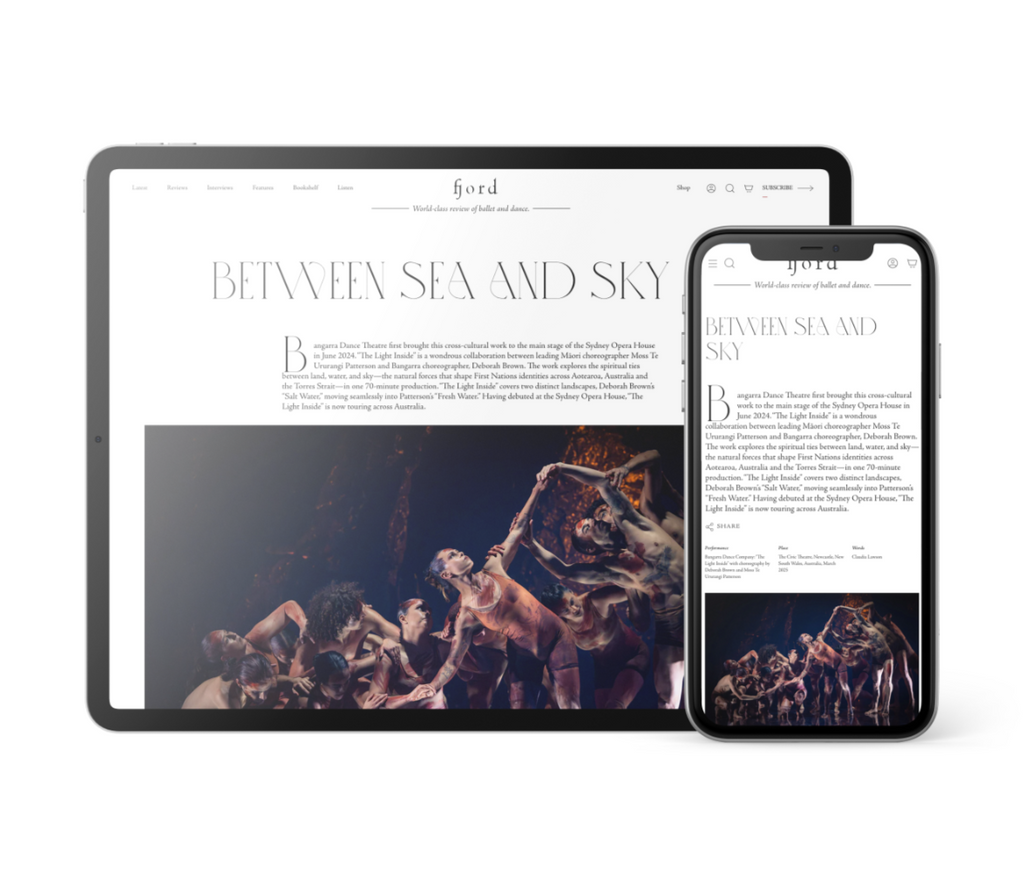From these cool environments, we travel to the first part of “Epilogue,” which is an intense duet that takes place under a radiating red landscape and is accompanied by powerful vocals from A Filetta. Maybe we are in a future scorched Earth—or have fled to Mars. Dancer Stefaan Morrow showcases an impressive combination of lithe floor work and vaulting tour en l’airs. When he is joined by Elsi Faulks, she intricately wraps herself around him, in sometimes caring or sad embraces. It’s a resonant, emotional counterpart to the complexity that has come before.
We end with “Epilogue” part two, a solo danced by with Clementine Benson. Benson starts as a poised statue framed by a pool of light, slowly shedding white powder to a composition by Dane Yates after Claude Debussy. You almost want Benson to remain here in this pooled circle, but the dance expands out, her circling footwork creating spirographs across the dusty floor. As the music veers out of its minimalist piano into an ominous reverberation, she ends back where she began; a poised Grecian statue. A final, refined artwork to consider upon exiting the “Triptych” gallery.











comments